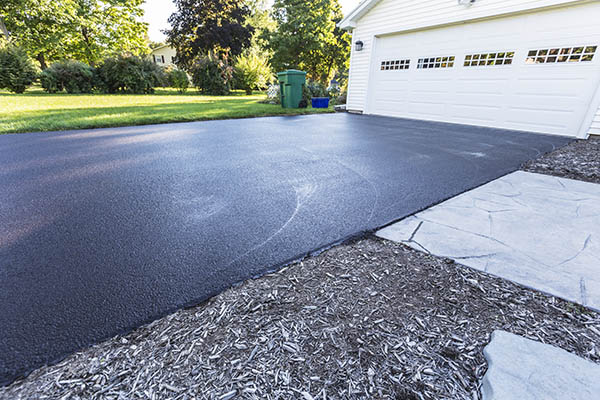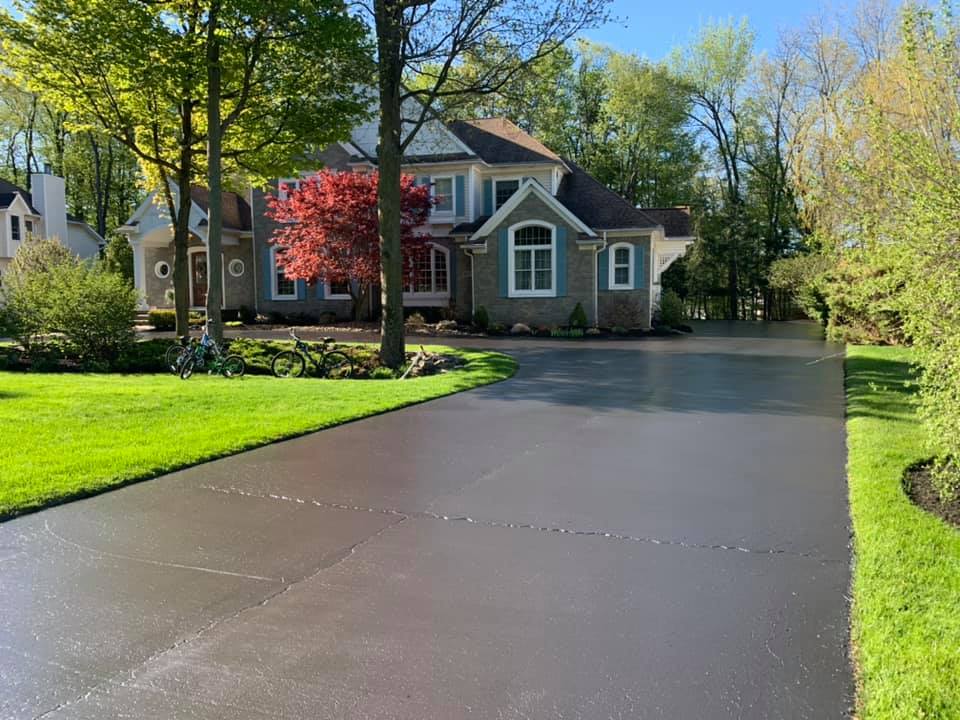Unleash the Potential: Regrading and Asphalt Sealing for Commercial Spaces
Unleash the Potential: Regrading and Asphalt Sealing for Commercial Spaces
Blog Article
Warm Mix Asphalt: A Sustainable Option for Sidewalk
Warm Mix Asphalt (HMA) has actually emerged as a leading lasting option for sidewalk solutions, supplying a myriad of environmental advantages and ingenious innovations. As the need for eco-friendly building and construction methods grows, discovering the nuances of HMA's sustainability can give important understandings into the future of pavement solutions.
Ecological Advantages of Hot Mix Asphalt

Moreover, Hot Mix Asphalt assists to mitigate city warmth island impacts. Its dark color absorbs sunshine, minimizing the quantity of warmth showed back into the ambience compared to lighter-colored pavements. This can decrease ambient temperatures in urban locations, decreasing the need for air conditioning and inevitably decreasing energy consumption.
In addition, Hot Mix Asphalt adds to enhanced stormwater management. Its permeable nature allows water to recharge and infiltrate the sidewalk groundwater products, minimizing overflow and the danger of flooding. These ecological advantages make Warm Mix Asphalt a sustainable selection for leading roadways and highways.
Energy Effectiveness in HMA Manufacturing
Is energy effectiveness a vital aspect in the manufacturing of Hot Mix Asphalt (HMA)? Absolutely. Power plays a significant role in the manufacturing of HMA, impacting both expense and ecological sustainability. One key element of power effectiveness in HMA production is making use of cozy mix asphalt (WMA) technologies (angled parking). WMA enables the blending and placement of asphalt at lower temperatures compared to traditional hot mix asphalt, resulting in minimized energy intake during production. This procedure not only reduces gas use however also decreases greenhouse gas discharges, making it a much more eco friendly alternative.
Furthermore, innovations in plant technologies have caused even more energy-efficient HMA production processes. Modern plants are developed with attributes like recycled asphalt sidewalk (RAP) handling abilities, effective heater systems, and enhanced insulation, all adding to power cost savings. By maximizing power usage in HMA production, the sector can decrease its carbon impact while maintaining high-quality pavement products. Power efficiency is, consequently, a vital consideration in making certain the sustainability of Hot Mix Asphalt production.
Recyclability of Hot Mix Asphalt
The recyclability of Warm Mix Asphalt (HMA) is a crucial facet of its sustainability and long-term environmental influence. HMA is just one of the most recycled products in the United States, with over 100 million heaps of reclaimed asphalt pavement (RAP) being reused each year in new pavement building. Reusing HMA supplies a number of environmental advantages, such as reducing the need for virgin materials, reducing energy intake throughout manufacturing, and reducing the amount of waste sent to garbage dumps.
The procedure of recycling HMA involves milling the existing sidewalk, crushing it into smaller pieces, and mixing it with brand-new accumulation and asphalt binder to create a recycled mix. This recycled mix can often perform along with or even far better than traditional HMA, while calling for less raw products and creating reduced greenhouse gas emissions. By incorporating RAP right into brand-new pavement jobs, road companies can conserve all-natural resources, decrease costs, and reduce the ecological footprint of road construction and upkeep tasks. Generally, the recyclability of HMA plays a substantial function in right here advertising sustainable methods within the pavement market.

Long-Term Efficiency of HMA
Asphalt sidewalks show resilience and durability over a prolonged duration, mirroring the lasting performance of Hot Mix Asphalt (HMA) The durability of HMA can be connected to its ability to stand up to rush hour tons, extreme weather, and the impacts of aging. Research studies have actually shown that well-designed and correctly constructed HMA pavements can last for 20 years or even more with normal upkeep. The secret to making best use of the lasting efficiency of HMA hinges on utilizing premium materials, following find more best techniques in building and construction, and applying efficient maintenance strategies. Proper water drainage, regular evaluations, and prompt repair work are necessary for maintaining the structural honesty of HMA pavements over time. Additionally, advancements in HMA innovation, such as the use of polymer-modified binders and cozy mix asphalt, have further enhanced the toughness and durability of HMA pavements. By prioritizing top quality building and upkeep practices, HMA remains to show itself as a cost-effective and sustainable remedy for durable pavement infrastructure.

HMA: Sturdiness and Sustainability
Demonstrating both sturdiness and sustainability, Hot Mix Asphalt (HMA) has come to be a foundation in the building and construction of lasting pavement frameworks - commercial parking lot paving. HMA's longevity stems from its capability to hold up against heavy loads, extreme climate problems, and high web traffic quantities, making it a reliable choice for streets, highways, and airport runways. The make-up of HMA, which usually consists of accumulations, binder, and filler, plays an essential role Click This Link in improving its durability and resistance to deterioration
In addition, HMA's sustainability depends on its recyclability and energy-efficient production procedure. The ability to reuse redeemed asphalt pavement (RAP) in brand-new HMA mixtures lowers the demand for virgin materials and minimizes the ecological influence of sidewalk construction and maintenance. Additionally, the power efficiency of generating HMA hinges on its lower blending temperatures contrasted to other pavement materials, leading to reduced power consumption and greenhouse gas exhausts.
Verdict
In verdict, warm mix asphalt (HMA) provides a sustainable remedy for pavement with its environmentally friendly features. HMA's recyclability, energy efficiency in production, and long-lasting sturdiness make it an environmentally friendly selection for road building and construction.
HMA is one of the most recycled products in the United States, with over 100 million lots of reclaimed asphalt sidewalk (RAP) being reused annually in new sidewalk building and construction.The procedure of reusing HMA includes milling the existing pavement, squashing it into smaller sized pieces, and blending it with new accumulation and asphalt binder to develop a recycled mix.Asphalt sidewalks show longevity and durability over an extensive duration, showing the long-term efficiency of Hot Mix Asphalt (HMA) Additionally, innovations in HMA modern technology, such as the usage of polymer-modified binders and warm mix asphalt, have actually even more improved the sturdiness and longevity of HMA pavements. The capability to reuse redeemed asphalt sidewalk (RAP) in new HMA mixes lowers the need for virgin materials and lessens the environmental influence of pavement construction and upkeep.
Report this page